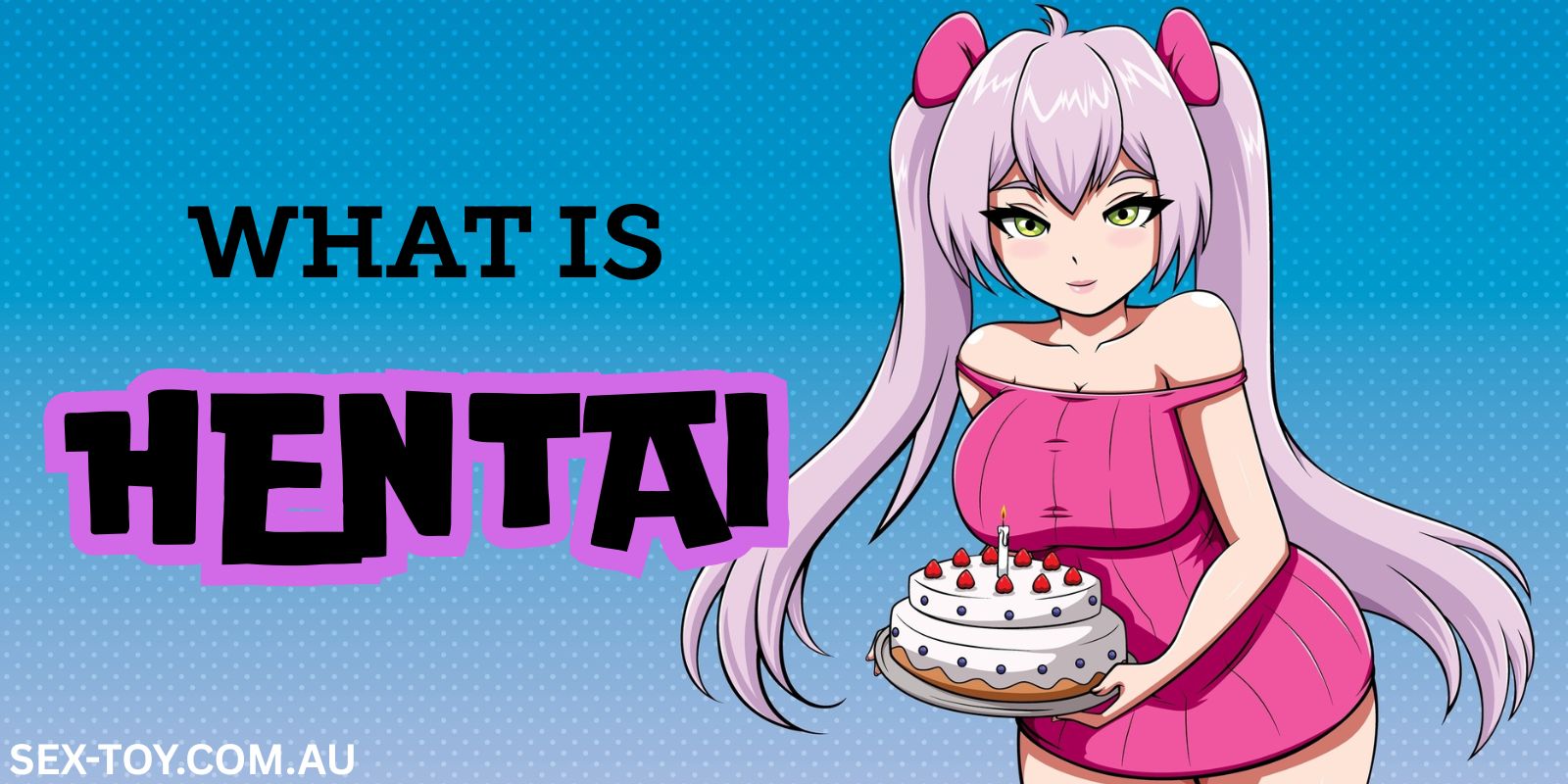What Is Hentai?
Hentai is the term used to describe explicit Japanese animation or manga that focuses on sexual themes and fantasy. The word itself translates roughly to “perversion” or “abnormal,” though in Japan it’s rarely used the same way it is in English. Instead, the Japanese refer to adult animation as “ero anime” or “ecchi,” reserving “hentai” for when foreigners talk about explicit anime content. What defines hentai isn’t just nudity — it’s the blend of stylised visuals, surreal storytelling, and the emotional intensity behind each scene.
According to Wikipedia’s article on hentai, its roots trace back to Japan’s long history of erotic art, including shunga woodblock prints from the Edo period. As manga and anime became global, so did hentai, appealing to audiences curious about fantasy and imagination rather than strict realism. Outside Japan, it became both a niche fascination and a cultural export, merging fantasy and sexuality into art. For some viewers, it’s not just porn — it’s storytelling that explores emotion, taboo, and curiosity in ways live-action media can’t.
Table of Contents – What Is Hentai?
- Meaning and Origins of Hentai
- Cultural Influence and Global Reach
- Art Style, Fantasy, and Emotional Themes
- Ethics, Realism, and Modern Technology
- Key Takeaways
- FAQ
Meaning and Origins of Hentai
The meaning of hentai has shifted over time. In Japan, the word simply describes abnormal behaviour, but abroad, it became synonymous with adult animation. Hentai builds on centuries of Japanese erotic art, beginning with the detailed shunga prints of the 1600s. These works used symbolism and exaggeration to depict intimacy, setting the stage for modern animated expressions of sexuality. When anime and manga evolved in the twentieth century, erotic subgenres naturally followed. Artists began pushing visual boundaries, blending lust, fantasy, and storytelling into what is now recognised as hentai.
Outside Japan, the term gained traction during the rise of global anime fandom. Western viewers found its mix of eroticism and creativity appealing, especially as digital distribution made it accessible. For many, it offered something live-action porn couldn’t — imagination without physical limits. Like affordable toys that make pleasure accessible for everyone, as mentioned in Affordable Sex Toys in Australia, hentai brings fantasy within reach of anyone seeking expression without judgement. It’s not only entertainment; it’s also a reflection of how people use art to explore sexuality and emotion in their own way.
Cultural Influence and Global Reach
Hentai’s influence extends far beyond Japan. As anime gained global popularity, its adult counterpart became a subject of fascination and study. Fans around the world found in hentai a space where sexuality and art merge without strict cultural rules. Its appeal lies in how it mixes the emotional depth of animation with open eroticism, something that mainstream entertainment often avoids. Outside Japan, it also became a lens through which people explore fantasy and curiosity safely — behind screens, within art, and without judgement. The cultural impact of hentai shows how media can make taboo topics more approachable through creativity and distance.
Hentai’s global reach is strengthened by how it adapts to local interpretations. Western audiences often treat it as both parody and fantasy, while in Japan, it’s viewed as another creative form of self-expression. As a sex toy reviewer, I often notice similar patterns among readers — curiosity about fantasy is nearly universal. Whether it’s an animated story or a well-made product, people want to feel excitement, emotion, and connection in ways that feel personal. This shared curiosity fuels the global fascination with hentai, transforming it from a cultural niche into a worldwide art form that blends imagination, sensuality, and humour.
Art Style, Fantasy, and Emotional Themes
One reason hentai stands apart from other adult genres is its distinctive art style. Artists exaggerate features such as eyes, proportions, and emotional expression to heighten fantasy and intensity. This style allows hentai to convey passion and imagination without needing realism. Because the content is drawn, creators can explore surreal ideas — supernatural creatures, transformations, or impossible scenarios — that would be difficult or unethical to film. The art becomes a bridge between humour, emotion, and arousal, helping people approach sexual curiosity in a creative way.
Hentai’s appeal also lies in its emotional depth. While some series focus purely on erotic visuals, others tell stories about love, power, or connection. Its themes range from lighthearted comedy to dark fantasy, showing how sexuality can express many aspects of the human experience. Common motifs include:
- Romantic and emotional storytelling that mixes affection with desire.
- Fantasy creatures or supernatural settings symbolising power or escape.
- Transformation stories that explore identity, pleasure, or liberation.
- Comedy-driven plots that use humour to defuse tension or taboo.
These creative directions make hentai more than adult content — they turn it into a form of erotic literature in motion. Through animation, emotion, and imagination, the genre reflects how humans use art to explore fantasy without limits or guilt.
Ethics, Realism, and Modern Technology
As hentai continues to evolve, discussions about ethics and realism have become more frequent. Critics argue that some depictions can blur moral boundaries, while others defend it as purely fictional art. Hentai’s exaggerated and stylised nature separates it from real-life behaviour, allowing viewers to engage with fantasy safely. The article Exposing the New Wave of Extreme Hentai highlights concerns about certain subgenres but also points out how these debates often reveal cultural differences in how societies view adult content. When approached with maturity and awareness, hentai becomes a space for expression rather than exploitation.
Technology has also changed how hentai is made and consumed. AI tools and digital platforms have made it easier for artists to experiment while keeping everything within ethical limits. The article Ethics of AI Porn discusses how artificial intelligence can both help and complicate erotic media, echoing many of the same challenges seen in hentai’s digital growth. These tools enable artists to build detailed worlds and emotional depth while maintaining full creative control. Understanding boundaries is key, especially for couples or individuals exploring fantasy in private. As noted in Mismatched Libidos in Couples, communication and consent remain essential, whether in art or real relationships. The balance between creativity and responsibility is what keeps hentai imaginative yet respectful.

Key Takeaways
- Hentai is adult Japanese animation that combines erotic fantasy, emotion, and artistic exaggeration.
- Its roots stem from traditional Japanese erotic art and evolved into global digital storytelling.
- The genre explores imagination and emotion, allowing people to experience fantasy safely.
- Technology and AI have expanded creative potential while raising ethical considerations.
- Respect and consent remain central to keeping hentai art meaningful and responsible.
FAQ – What Is Hentai?
1. What is hentai?
Hentai is explicit Japanese animation or manga that focuses on sexual and emotional storytelling. It mixes fantasy and art to explore desire creatively.
2. How is hentai different from regular anime?
Regular anime focuses on general stories, while hentai includes erotic content and adult themes. Both share the same artistic foundations but differ in purpose.
3. Why is hentai so popular?
People enjoy hentai because it allows safe exploration of fantasy. Its mix of art, humour, and emotion makes it more expressive than typical adult media.
4. Are there ethical concerns with hentai?
Yes, some styles raise debates about realism and sensitivity. When treated as fiction with respect for boundaries, hentai remains a form of creative expression.
5. How has technology changed hentai?
Advances in AI and animation software have made hentai more detailed and accessible. These tools expand creativity while keeping content under ethical control.

Risetob is a sex toy reviewer sharing honest, detailed insights to help readers choose products that feel good, work well, and are worth the money.



Leave a Reply